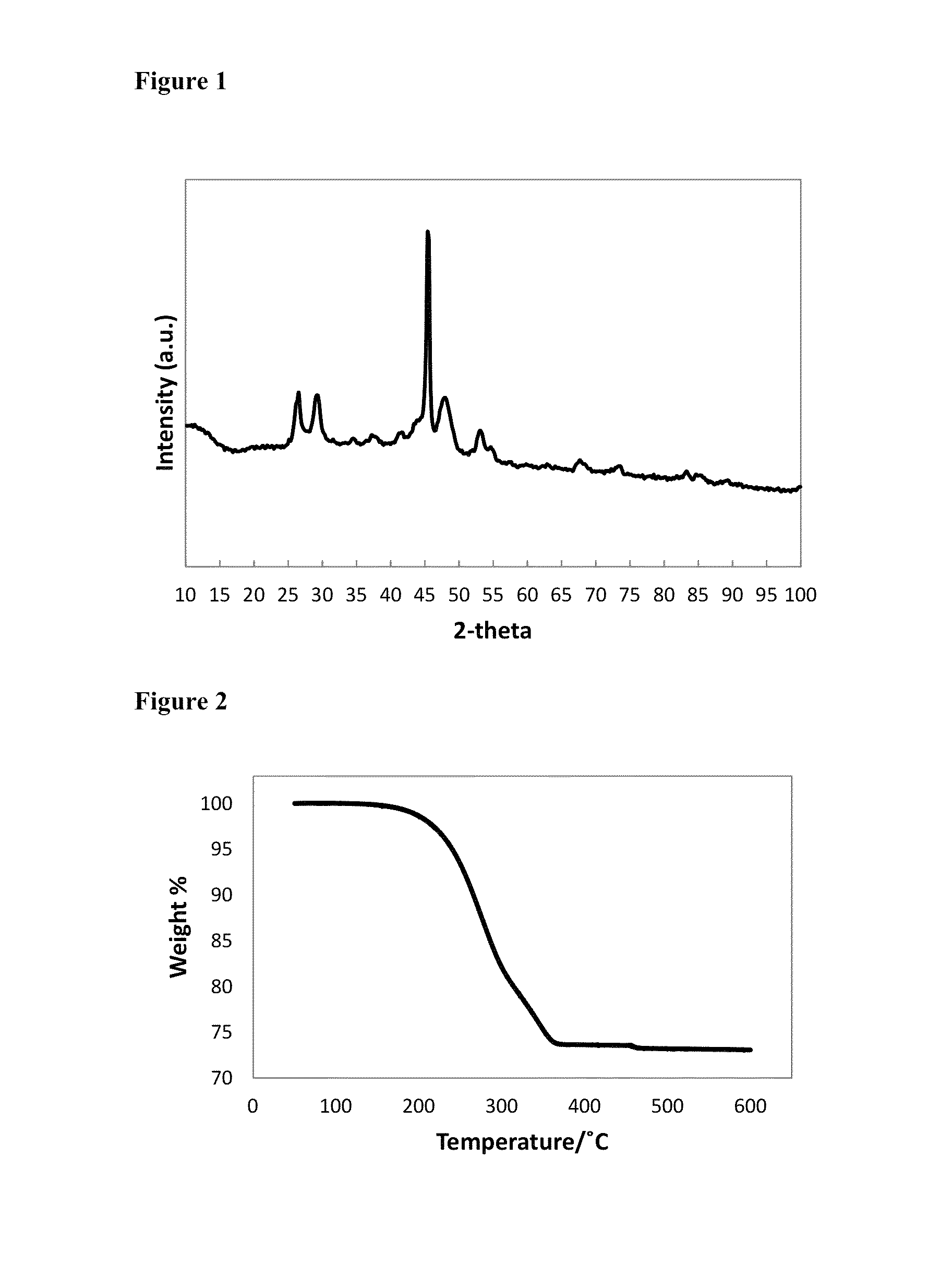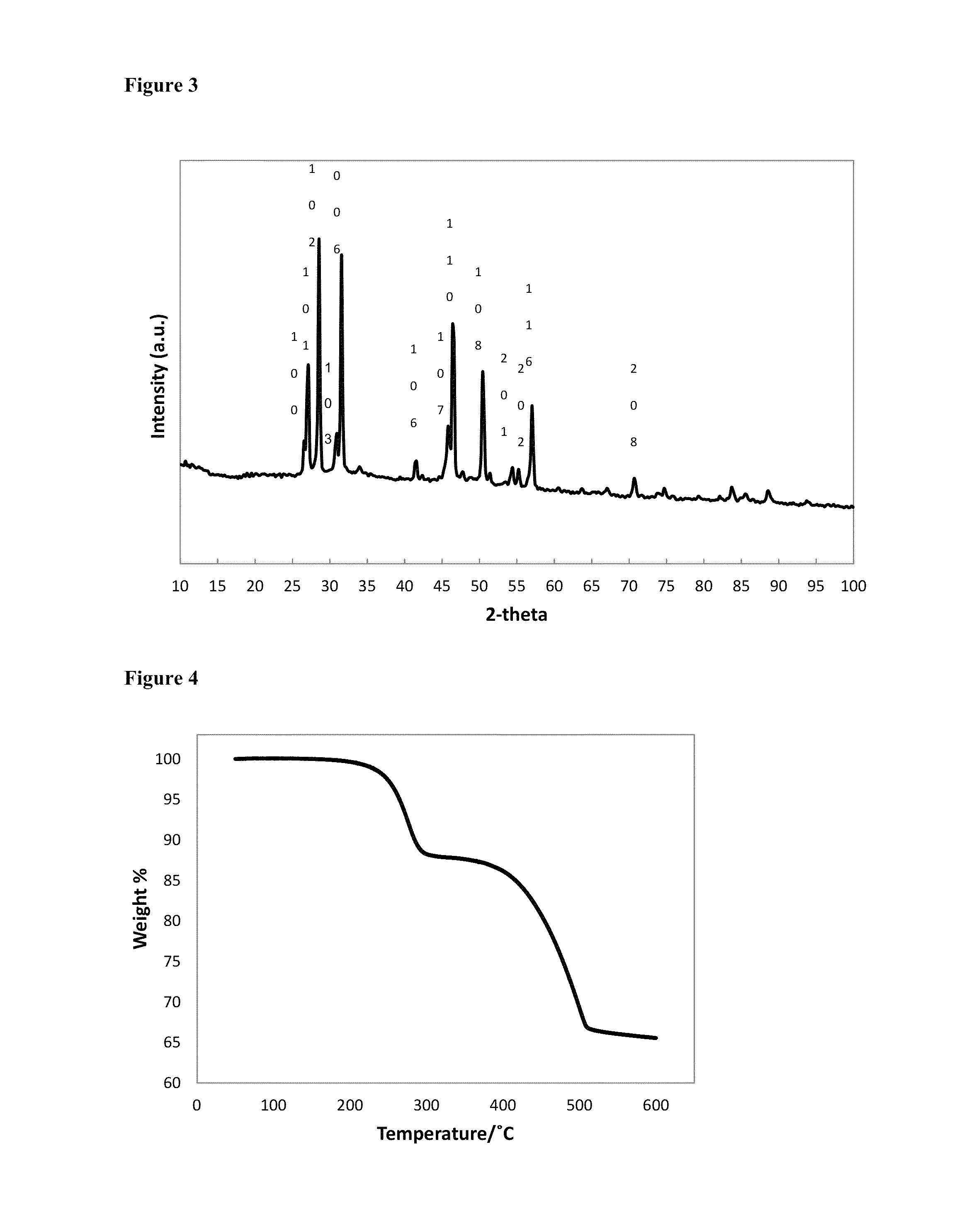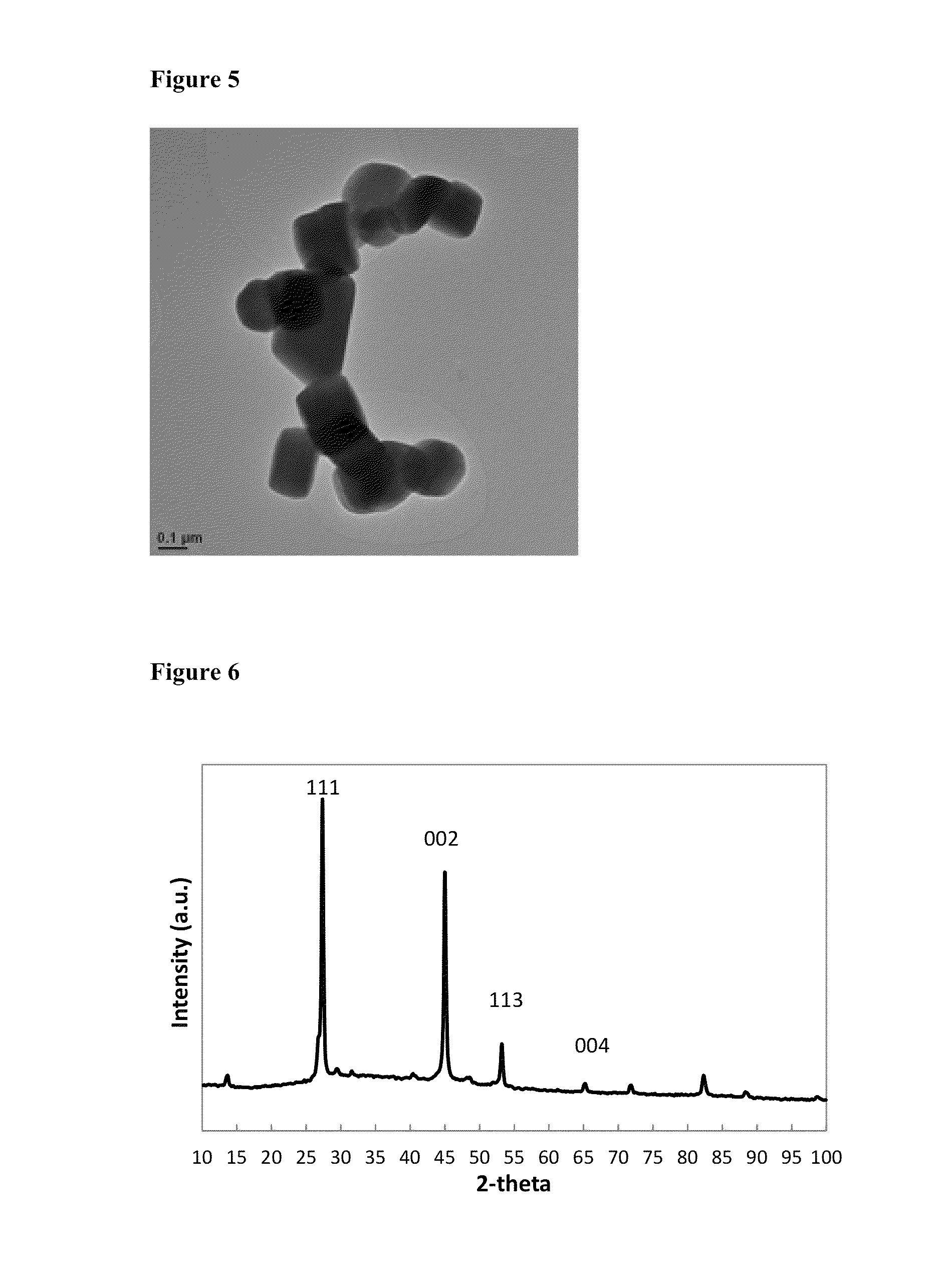Preparation of copper selenide nanoparticles
a technology of selenide nanoparticles and copper selenide, which is applied in the direction of photovoltaic energy generation, electrical equipment, semiconductor devices, etc., can solve the problems of high cost of single crystal silicon wafers currently used, poor particle size distribution and solubility, and relatively poor light absorption of silicon, etc., to achieve uniform size, confer solubility and/or dispersibility, and narrow melting point range
- Summary
- Abstract
- Description
- Claims
- Application Information
AI Technical Summary
Benefits of technology
Problems solved by technology
Method used
Image
Examples
example 1
Synthesis of Hexagonal Phase Octane Selenol-Capped Cu2-xSe Nanoparticles
[0073]1.58 g of Cu(ac) (ac=acetate; 0.129 mol) and 12 mL of 1-octadecene were degassed for 30 minutes at 100° C., then 10 minutes at 140° C., before cooling to room temperature under nitrogen flow. The cooled mixture formed a dark green solid. 8 mL of 1-octane selenol (0.0448 mol) was injected into the flask, then the mixture was heated to dissolve the solid and distil off the acetic acid; the flask temperature was raised to 160° C. to completely dissolve the solid. After cooling to 140° C., 8 mL of TOP / Se (1.71 M, 0.0137 mol) was injected into the flask, dropwise, over 8 minutes. Once the addition was complete, the temperature was raised to 160° C. for 2 hours, before annealing at 120° C. for 4 hours, then cooling to room temperature. The solid was isolated by washing with methanol, then acetone, followed by centrifugation. The yellow / brown supernatant was discarded, and the dark brown solid was retained as the...
example 2
Synthesis of Hexagonal Phase Octane Selenol-Capped CuSe Nanoparticles with the Klockmannite Crystal Structure
[0074]3.88 g of Cu(acac)2 (acac=acetylacetonate; 0.0148 mol), 2.02 g of Se powder (0.0256 mol) and 27 mL of 1-octadecene were degassed for 30 minutes at 100° C., then 10 minutes at 140° C., before cooling to room temperature under nitrogen flow. 16 mL of 1-octane selenol (0.0897 mol), was injected into the flask, then the mixture was heated to 160° C., then held for 2 hours, before annealing at 120° C. for 4 hours, then cooling to room temperature. The solid was isolated by washing with methanol, then acetone, followed by centrifugation. The yellow / green supernatant was discarded, and the fine black powder was retained as the product. Elemental analysis for the product by ICP-OES: C 6.70%; H 1.10%; Cu 40.82%; Se 50.25%. The elemental ratio corresponds to CuSe0.99. FIG. 3 is an XRD pattern for hexagonal phase CuSe capped with 1-octane selenol, as synthesised in Example 2. FIG....
example 3
Synthesis of Cubic Phase Octane Selenol-Capped Cu2-xSe Nanoparticles with the Berzelianite Crystal Structure
[0075]3.88 g of Cu(acac)2 (0.0148 mol), 22.5 mL of 1-octadecene and 20.5 mL of 1-octane selenol (0.1149 mol) were degassed for 30 minutes at 100° C., then 10 minutes at 140° C., before cooling to room temperature under nitrogen flow. The mixture was heated to 160° C., then held for 2 hours, before annealing at 120° C. for 4 hours, then cooling to room temperature. The solid was isolated by washing with methanol, then acetone, followed by centrifugation. The yellow / green supernatant was discarded, and the black solid was retained as the product. Elemental analysis for the as-synthesised product by ICP-OES: C 1.56%; H 0.22%; Cu 59.18%; Se 37.78%. The elemental ratio corresponds to Cu1.95Se. Elemental analysis for the product after heating to 600° C.: C 0.03%; H 0.00%; Cu 63.40%; Se 36.49%, suggesting loss of inorganic selenium from the nanoparticles as well as the organo-selenol...
PUM
| Property | Measurement | Unit |
|---|---|---|
| absorption coefficients | aaaaa | aaaaa |
| diameter | aaaaa | aaaaa |
| diameters | aaaaa | aaaaa |
Abstract
Description
Claims
Application Information
 Login to View More
Login to View More - R&D
- Intellectual Property
- Life Sciences
- Materials
- Tech Scout
- Unparalleled Data Quality
- Higher Quality Content
- 60% Fewer Hallucinations
Browse by: Latest US Patents, China's latest patents, Technical Efficacy Thesaurus, Application Domain, Technology Topic, Popular Technical Reports.
© 2025 PatSnap. All rights reserved.Legal|Privacy policy|Modern Slavery Act Transparency Statement|Sitemap|About US| Contact US: help@patsnap.com



